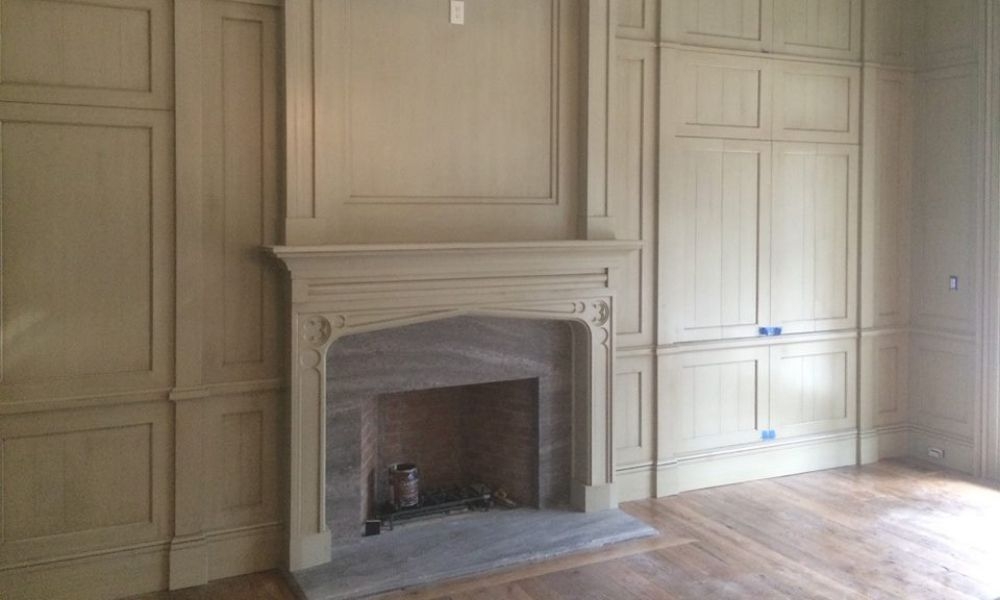3 Ways to Add Gothic Features to Your Home copy

Picture walking through the majestic hallways of a Gothic-style castle. Picture the sky-high, rib-vaulted ceilings crossing precisely and the strong, smooth stone brightened by warm chandeliers and lamps throughout. The sense of scale to it all is shocking; few modern spaces impress visitors like a Gothic one. The solidity of it all—the heavy stone and substantial dark wood—also exudes clear strength and prestige.
Today, homeowners strive to create the same astounding sense of scale by incorporating the same decadent materials and honing in on the same intricate details that centuries-old Gothic structures capture so well. If you’re curious about Gothic characteristics and how they specifically function within a home, consider our list of ways to add Gothic features to your home.
Incorporate Dark Wood
To begin shifting your home to a more Gothic sensibility, start with some dark wood. Gothic spaces tie together well with woods such as mahogany, walnut, oak, and ebony. Using a dark red-tinged wood such as mahogany can contribute a deep warmth that differs from a flatter, less earthy wood. Meanwhile, ebony features a unique dark, blackish tone that lends a timelessness to your space.
Wood Trim
Practically, you can add these dark woods in the form of wood trim, wainscoting, or wood furniture. Wood trim adds layered depth that pleasantly breaks up the uniformity of your walls and frames in each room. If you want the appearance of height, place decorative wood trim along doorframes to draw the eye up and to re-center visitors’ perspective.
Wainscoting
If you want more than a splash of dark wood, consider installing wainscoting, which situates wood from the baseboards all the way up to about chair height (or half of the wall). Popular for several hundred years, wainscoting is a classic, distinguished way to layer your walls while maintaining a surface for attractive embellishments. This is especially ideal for rich wood panel moulding, which—when raised—institutes a curvature to the room that mimics classic Gothic shapes.
Go for Stone
Stonework is particularly helpful simply because it’s a feature of Gothic cathedrals and castles. In the Gothic architectural period, nothing communicated permanence and majesty quite like rich, high-quality materials. Stone is, after all, especially long-lasting and hard to access, and it carries a distinguished quality. Apart from this direct association, stone is worth including in your home for other reasons as well. Installing a stone floor furthers the aesthetic sense of stability and solidity to which strong furniture contributes.
If you don’t want to install stone features, you have other options. For one, faux stone gives the same appearance of permanence without the cost. Go for a faux stone paint or install a stone veneer to achieve this look.
Tie in the Classic Gothic Arch
Few people who consider the Gothic period don’t picture the famed Gothic arch. Architectural advancements during this time—including the arch— allowed more light into buildings than Medieval designs did. The lancet arch—tall and pointed at the apex—is particularly notable as a feature that conveys height and light. So, when you’re initially installing your windows, why not go Gothic? Lancet windows lend a transcendent feel and enhance the overall scale of your home. The ability to see more of the sky and the outdoors has its benefits as well.
If you have further questions about ways to add Gothic features to your home—and particularly how you can incorporate custom wood carving into your home—contact our staff at Heartwood Carving for advice.
